Looking purely at numbers, the most important Finnish artillery piece is the 122 mm D-30 (or 2A18 as the GRAU-designation goes), 471 of which are found in the Finnish arsenal. Finland was amongst the first waves of export customers when the then brand new light howitzer was acquired in the early 1960’s. At that time it was seen as a brigade-level asset and constituted the first modern post-war artillery system of the Finnish Army. The gun came with a host of new capabilities, including the ability to fire at very steep angles of attack, giving it significantly greater capabilities in urban terrain, as well as the innovative base that allowed a full 360° firing arch, the latter especially useful when using the gun in the direct firing role to fight of any enemy’s that might have been able to sneak up on the gun position from an unexpected direction.

Things have changed, however, and today the venerable light howitzer is relegated to the battalion support role. Here it soldiers on, the 122 mm being the sole Soviet-era calibre not to be counted amongst the “difficult” calibres that the FDF has been trying to replace for quite some time already. It looks like the current schedule is that “at least part of the towed 122 H 1963 howitzers” will stay in service towards the end of the decade. However, while the gun currently handles “fire support of infantry and jaeger brigades as well battlegroups”, especially in the case of the regional and operational units time is running out. 15,400 meter range just doesn’t cut it for a towed system if one tries to keep maintaining mutually supportive coverage of a number of moving companies and battalions according to the current Finnish infantry doctrine.
Before discussing possible replacements, one need to remember why the Army has light guns to begin with, as on the surface everything is better in 155 mm. The answer boils down to a number of factors. One is undeniably cost. The 122H63 was and is cheap. It’s cheap to acquire, cheap to operate, and fire cheap rounds. This ties in with the logistical footprint, as the rounds are smaller, a significantly larger number of rounds can be ferried around for any given volume and weight compared to 155 mm. Granted the effect per round is smaller, but in several fire missions, especially when doing suppressive fire, the number of rounds available counts more than the size of the individual bang. As current Finnish artillery doctrine dictates that the guns need an abundance of rounds stored in the forward gun positions, this is an area where the smaller 122 round shines.
Overall, it is seldom recognised just how big a difference the smaller size makes for the whole logistical chain. It’s not just that the gun is smaller, but the vehicle towing it can be smaller as well (or, alternatively, go places where it couldn’t with a heavier towed cargo). The ammunition supply train can be lighter throughout, either translating into more rounds carried per supply run or by having lighter vehicles do the runs. This further brings down the operating cost, and yet again contributes to a smoother logistical flow, which is felt also indirectly in issues such as mobility (in the sense of where one can go with the battery and still have an adequate supply train).
The issues are, however, obvious. The short range was already mentioned, and while the upper end of the spectrum has seen significant leaps in firepower through the improvement of both the guns and the rounds they fire, similar developments have been largely absent in the lower tiers of the artillery. In part this is driven by the simple fact that it makes sense that new technological developments are first introduced in the higher-end systems, from where they usually then trickle down. However, this trickling down has been curiously absent, leaving systems such as the 1970’s vintage British 105 mm gun L118 (M119 in US service) as amongst the most modern guns in service. One reason is likely that several of the benefits of the light gun over the heavier ones – ease of handling, affordability, and lack of complexity – run contrary to developments such as longer barrels and auxiliary power plants. Developments in rounds, including both guidance and sensor kits as well as sub-munitions, are usually size-restricted in that the “extras” are of the same size regardless of whether you try to squeeze them into a 122 mm shell with a 14 km range or into a 155 mm one with 30 km range. Crucially, that leaves less room for the exploding stuff that is supposed to provide the effect, so while it isn’t necessarily impossible to create guided light gun rounds, their drop in effect compared to ‘dumb’ HE-rounds in their calibre is significantly larger than what is the case for 155 mm rounds.
Regardless of the reason, the fact is that the gap in firepower between light and heavy systems is widening both in absolute and relative terms. And as several countries struggle with having a harder time funding and manning their armed forces in general (and with the artillery arms being no exceptions) the light guns have in many cases struggled to justify their existence (especially when it comes to upgrade and acquisition programs).
Nothing of this is particularly new, but rather the trend has been going for quite some time. The Finnish Army has been able to kick the can forward through the large starting number of 122H63s, relatively recent surplus buys in the 90’s, and allowing the retirement of the most worn ones as the total number of batteries has shrunk. Still, everything has an end, and there simply isn’t an obvious replacement.
As noted, buying a new towed gun to replace like-for-like is difficult even without considering the value of a towed gun on the battlefield of 2040. That’s because there are extremely few offerings. Denel of South Africa produced a technology demonstrator 105 mm gun called Light Experimental Ordnance (LEO, with a series produced gun being designated G7) that started test firing in 2001. The system is probably the most impressive weapon of its class, sporting ranges of 24,600 meters with standard ammunition while keeping a light total weight. The main issue is that it is not a ready operational weapon, and Denel has been open with the fact that quite a bit of work remain until it can be one. Coupled with the somewhat uncertain future of Denel and the South African arms industry in general, these are likely factors that significantly lowers any potential Finnish interest in acquiring the system.
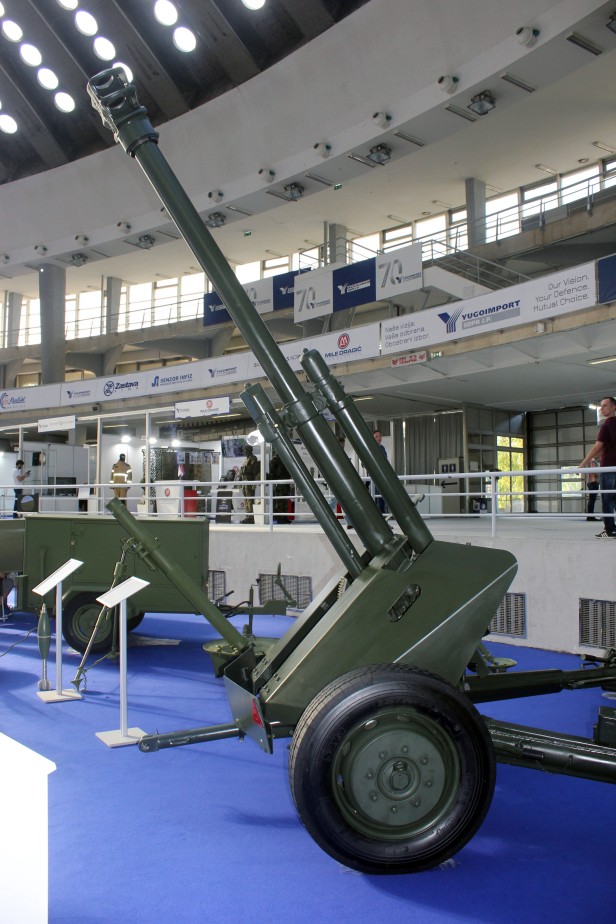
Another of the very few countries that offer modern-ish towed guns is Serbia, which politically isn’t the first choice for a major Finnish arms contract, but still might be doable. While they offer a number of upgraded versions of the D-30 and the US M101, they also sport a domestic 105 mm howitzer which in the newest version is designated M56-2. The weapon traces it’s lineage to concepts found in the German leFH 18/40 (yes, this sounds bad, but it’s not quite as bad as it sounds), but fitted with a new L33 barrel it can push HE-rounds some pretty impressive distances downrange. Besides the basic US-pattern ammunitions, a number of longer-ranged rounds exist. These include a boat-tailed round with 2.85 kg of TNT and a maximum range of 15 km, and a base-bleed round capable of putting the same amount of TNT at a target 18 km away. The standard M1 HE-round has a maximum range of 14.5 km, with a new locally developed charge.
I would be, and I can’t stress this enough, highly surprised if the M56-2 would enter Finnish service. At the same time, this comes with the caveat that it wouldn’t be the first procurement decision to surprise me, and if the Army decide that they just want a basic (if crude) solution they can drop into the current organisation, there aren’t that many alternatives.
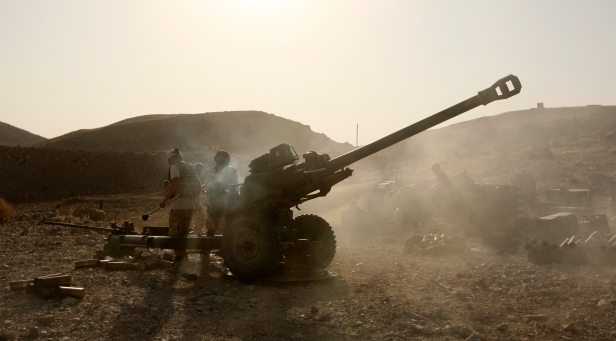
The obvious alternative instead is the British L118/M119 105 mm light gun. Despite it’s age, it is still quite a bit younger than the D-30, and, crucially, in service with a number of Western countries that have spent time and resources on keeping it up to date. It does beat the D-30 in the number game as well, being shorter and slightly narrower in transport configuration, having a faster rate of fire, and a longer range. With a combat weight of just under 2,000 kg, it is also quite a bit lighter than the D-30 than tips the scale at around 3,200 kg (somewhat depending on configuration). And while I decried the lack of great innovations on the scale we’ve seen amongst the heavy hitters in the start of this post, there’s no denying that the latest versions of the L118 is vastly superior to those rolling of the assembly lines in 1975.
A key part of this was the US upgrades to M119A2/A3-standard, (the A3 differing from the A2 in having a digital fire control system that uses “90% of the software derived from the 155 mm M777A2”) as well as an MLU-project and the fitting of the Selex ES LINAPS artillery pointing system (yes, really) on the UK guns. The LINAPS is mounted on the barrel and include an integrated INS/GPS system, a large touch-screen to control the software, an odometer keeping track on the distance travelled, and a muzzle velocity radar. In essence, it is a small computer that keeps track on where the gun is, where it is pointing, and then tells the crew where to shoot in order to hit the target they want to shoot at. In essence, this is roughly similar to what the new FCS of the M119A3 does, and what both does in the field is that they allow the crews to start shooting (and hitting) significantly quicker than what has been the case earlier when the position of the gun has been decided by external means.
The nicest part about the L118/M119 is without doubt the sheer number of units, with over 1,100 guns having been produced (though observant readers will note that a Finnish one-for-one replacement of 122H63 would mean increasing the total number of L118/M119 production with 43%, further highlighting just how unique the Finnish artillery park is). The status as the de facto standard light gun in the Western world means that there are ample upgrades and improvements being offered for it, including both for the gun itself and for the rounds it fire. The UK version has a stated max range of 17,200 meters with HE-shells and charge “Super” (15,300 meters with charge number five), while the US has adopted the M1130 HE FRAG with base-bleed as their standard HE-round going forward. This South African Rheinmetall Denel Munitions developed round is capable of reaching out to 17,500 meters. The airmobility and widespread use, including in a number of export countries, means that even if the regular Army units of the US and UK were to start replacing the system, it would still have a considerable user base for years to come.
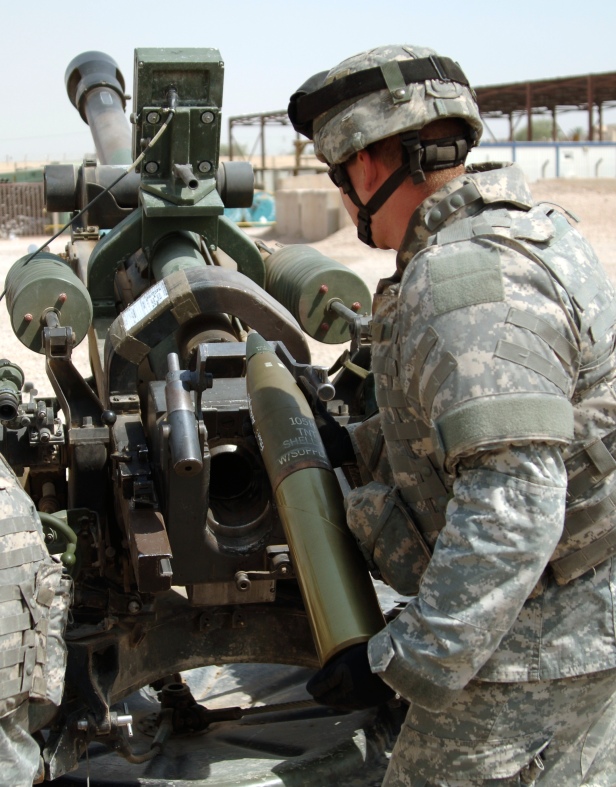
But is another towed gun really what is needed? This is a surprisingly hard question to answer, and more so for the light guns than for the heavy ones. As noted, much of the benefit of the lighter platforms stem from the fact that they are small, cheap, and lack the complexity of the larger ones. Sticking the gun on a vehicle can easily defeat the purpose of having light guns. This is especially true for tracked platforms, as they will add not only the complexity of a vehicle, but the added complexity of tracks and the need for a transporter, adding several layers of maintenance and manning requirements that especially the less prioritised units of the Finnish Army can ill afford.
For a wheeled platform, the trade-off isn’t as bad. In theory at least, the towing vehicle can be replaced (though depending on the setup, a truck might be needed for ammunition and crew transport), leaving the same number of wheeled platforms in the unit as before. The platform also is likely to be of roughly the same size and mobility as the current tower, meaning integration is easier than for a tracked one. The big benefit is obviously the survivability that comes from being able to quickly move in and out of firing positions, which is a big benefit, especially in more contested sectors of the front.
Finland’s new best friend when it comes to artillery, the South Korean company Hanwha Techwin, has the EVO-105 which in essence is a 6×6 truck featuring an M101 105 mm howitzer on top. Despite the somewhat archaic outlook, it is actually just on the verge of entering service. For the standard M1 HE-round the maximum range is 11,300 meters, which can be described as lacklustre. However, there is a remedy as the company also has an upgraded version of the weapon itself on offer, designated KH178. Changing out the baseline M101 to the KH178 with a L34 barrel it is possible to achieve ranges of up to 14,700 meters for the M1, or 18,000 meters using rocket assisted projectiles. The KH178 is an old upgrade program dating to the 80’s, and unless a really nice deal can be had on surplus howitzers coming from the large South Korean stocks, there is little use in getting the towed version. On the EVO it is marginally more interesting, but truth be told this isn’t the most elegant solution out there, and since it’s unlikely to be the cheapest, it is likely not a serious contender.
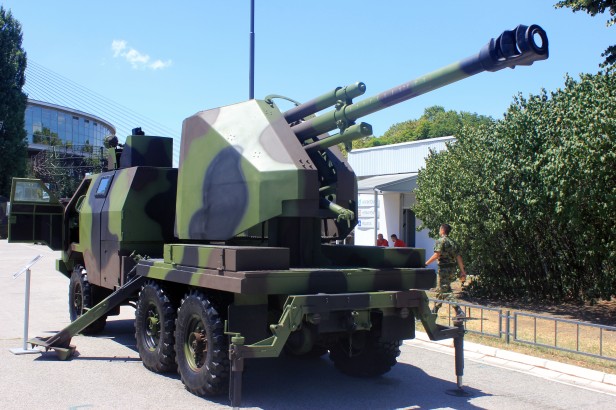
Our aforementioned Serbian friends pushes a number of different configurations through the Yugoimport brand, including putting the M56 into an armoured turret and calling it the M09, as well as putting different derivatives of the D-30 on truck chassis in both turreted and unprotected configurations. The idea of putting D-30’s on truck to give them mobility is widespread, and if Finland decided to go down that road Serbia just might be a possible partner (though in that case the Finnish version would probably be based on a domestic, or Swedish, chassis). At least it makes more sense than Sudan and the Khalifa…
Political considerations effectively take out a number of other designs as well. China and Russia are obviously both still very much in the business of both towed and self-propelled guns of all classes, including in western calibres for export purposes, but neither country won’t receive any RFI’s any time soon. One company that probably will, however, is Mandus Group.
The Hawkeye is a soft-recoiling 105 mm gun mounted on a M1152A1 HMMWV, giving the light gun a significantly smaller platform than the 6×6 used by most other examples. Early versions shown used the M102, but a more recent demonstrator has been fitted with the M119. This could potentially be a really nice way of handling the need for light fires, marrying a tried-and-tested 105 mm gun to a tried-and-tested chassis, offering high mobility and a small logistical footprint. The shorter range compared to the current 122H63, just 11,600 m with the standard M1 HE shell (it can reach 19,500 meters with a M193 HE RAP), it partially offset with the higher mobility.
The big deal here is obviously that no-one has bothered buying the concept, at least not yet. And a Finnish launch order for a few hundred Hawkeyes doesn’t seem likely. We are quickly approaching the space where the only current Finnish indirect fire system comes into play.
The Patria NEMO is a 120 mm turreted mortar system, and while mortars aren’t exactly light guns, they do offer a number of qualities on their own. The NEMO is the lighter single-barrelled brother to the AMOS that is currently in service in limited number with the Finnish Army, and could potentially be integrated into a number of different platforms (8×8 or 6×6). While the range is shorter, typically just over 10,000 meters, the mortar shells does offer more explosives thanks to their thinner casings (3.1 kg in the case of the MEHRE round marketed for AMOS/NEMO use). The advantage of turreted mortars is also that they allow for direct-firing as a self-defence option. There is also a clear logistics chain for mortars already in place, and adding more towed and self-propelled mortars might provide the lo-hi mix needed to fit inside the (limited) funds available to replace the 122 mm howitzers.
Because lets face it – there’s likely not a one-size-fits-all solutions to the retirement of the 122H63. Some units will likely see their light batteries converted to towed heavy mortars, while for others that simply won’t cut it and something heavier hitting and/or more mobile will be needed. I would not be surprised if a number of L118/M119 are bought at some point, but their number likely won’t be anything near 470. If so, these would likely occupy the middle ground, being used in light battalions for some of the regional forces, with a number of towed mortars acquired to the less lucky ones. If mobility is seen as an absolute requirement for a future mid-range system, a 120 mm mortar on the back of a truck is probably the answer. Hawkeye and NEMO would be nice, but I just don’t see the money for any major buys of these (though the possibility of acquiring them in small numbers for prioritised battlegroups as was done with the AMOS remains, see e.g. my ongoing grievance about the lack of a boatmounted indirect fire system for the coastal jaeger battlegroup).

One of the issues occupying the minds of the Finnish artillery planners is also the inability of light guns to fire special munitions, including precision guided shells and dedicated sensor-fused anti-tank munitions such as BONUS II. If this capability is to be rolled out wider, either more heavy battalions are needed, or mixed battalions with one heavy and two light batteries will start to appear among the infantry brigades.
Which brings us to one last interesting example. Singapore, another country known for their domestic artillery production, used to rely on the Nexter (formerly GIAT) 105 mm LG1 light gun for their light fires up until this side of the year 2000. These have however been replaced by the lightweight ST Kinetics Pegasus, a towed 155 mm gun sporting a L39 barrel and an APU to move the system into firing positions. While acquiring a new-built towed 155 mm gun with a L39 length barrel does sound like an anachronism in a world of self-propelled L52-systems, it is important to remember that the comparison here is with the towed 122 mm. The Pegasus has all the niceties expected of a modern 155 mm gun, including a powered ammunition loading system allowing for a burst of three rounds in 24 seconds (or a sustained rate of 4 rounds/min for three minutes, after which it drops to one round every half minute) and as mentioned an APU. The gun has an interesting design, sitting on a box-shaped base when in firing mode rather than using a split tail, further adding to it’s compact nature. The L39 barrel does suffer a bit when it comes to range, but at 19,000 meters for a standard HE shell and 30,000 meters for a base-bleed HE it’s still vastly superior to any light guns out there. The weapon is designed to be able to fire “all kinds of 155 mm projectiles and charges”, a key detail as it is the last piece of the puzzle to convert the Singapore artillery to an 155 mm-only force (following the towed 155 mm L52 FH-2000 and L39 FH-88 as well as the self-propelled Primus).
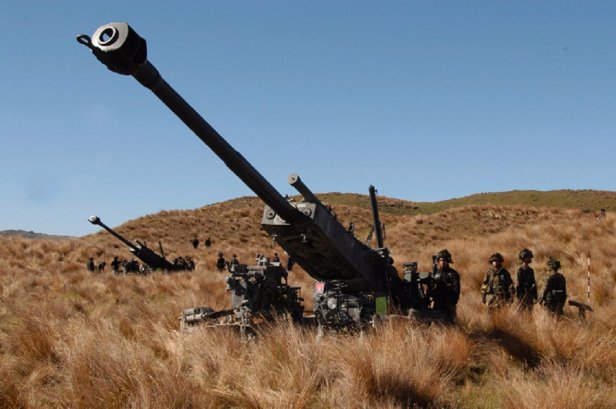
The Pegasus might not be the answer to the Finnish artillery needs, as while I haven’t been able to find a quoted price for it, words like ‘lightweight’ and ‘titanium’ are usually indicators that it won’t be cheap. However, the general idea of shifting 155 mm guns down in the hierarchy to replace light batteries might well be part of the eventual solution. The obvious candidate here is the 100+ of the older 155K83-97 which is a Finnish-built rather conventional L39 gun. In mixed batteries with either a new light gun or those 122H63 that are in best condition, 48 of the heavier guns would give six battalions an eight-gun heavy battery, giving them a serious increase in firepower (mixed battalions probably would require at least the heavy battery to be eight-gun to allow it to be used for independent fire missions).
There’s obviously just a few problems:
- The issue with finding firing positions for dispersed eight-gun batteries,
- The added logistical complexity of mixed-calibre battalions,
- The fact that 48 heavier guns would replace just ten to twenty (very generously calculated) percent of the soon-to-be-retired 122H63-force,
- The fact that something then would need to replace at least part of the 155K83-97 in their current role to free them for the move to the current light battalions.
The first two have so far stopped mixed battalions from appearing in the Finnish OOB, while the third point goes back to the lack of a one-size-fits-all solution. The fourth is rather complex, and we’ll get back to that one.


For solutions of the hawkeye type (A unprotected howitzer mounted on a lightly armored vehicle), in all videos I have seen of this, the crew seems to dismount first and operate the gun unprotected. Wouldn’t this leave such a system very vulnerable to counterbattery fire?
The towed guns suffer from the same, with the difference that they can’t jump back on the car and drive away at short notice after having fired of their rounds.
A super post with great analysis. This is relevant for many Eastern European, African and Baltic Countries that still service the D30. The sales for a new gun could be huge. I actually helped create the gun drill on the first Light Gun prototypes at Woolwich back in the early 70s with then SMIG W02 Ron Colman. I then served with it at the artillery depot training recruits and again later in Aldershot with the parachute artillery regiment. A truly great gun.
A Swedish artillery officer has written an interesting blog post (in Swedish) that touches on some of the topics brought up in your post. He is however more focused on the Swedish brigade level.
I actually translated that one and ran it as a guest post back when it came https://corporalfrisk.com/2019/01/26/guest-post-an-unreasonable-brigade-artillery/
Must have missed it, my bad. Do you think that the Swedish and Finnish armed forces could cooperate in developing a vehicleborne 120mm gun or are our doctrines to far apart?
The AMOS project was originally just that, but then Sweden backed out and eventually after a few years developed the Mjölner, while Finland in the meantime developed the NEMO. Currently I don’t see any room for a joint project there.
A good point about 105s is that their flat trajectory (when possible) can make them hard to spot by CB radars